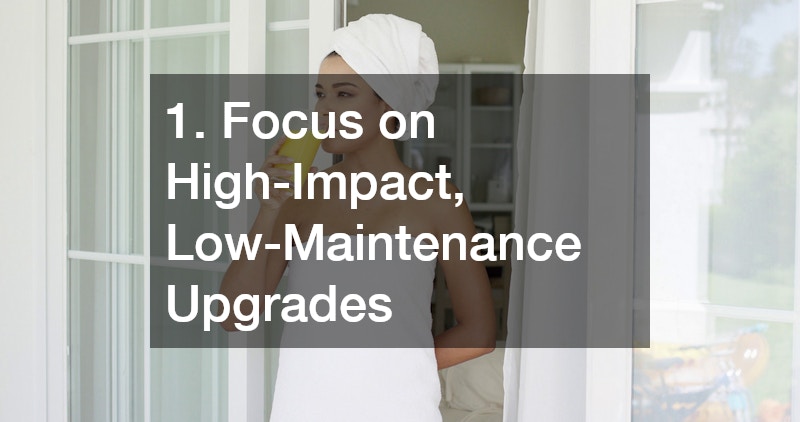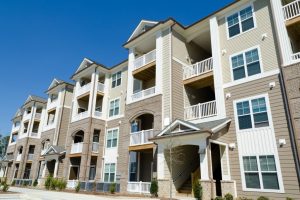Remodeling a rental property can feel overwhelming, especially for landlords juggling multiple responsibilities. Between keeping renovation costs manageable, maintaining consistent occupancy, and selecting improvements that will appeal to a wide range of tenants, it’s easy to feel lost in a sea of options. Every decision—from flooring and cabinetry to lighting and outdoor spaces—can impact tenant satisfaction, the property’s rental value, and long-term maintenance costs. Choosing the wrong upgrades may result in frequent repair calls, increased turnover, and wasted investment.
However, when approached strategically, remodeling can be a powerful way to enhance your property’s value, attract quality tenants, and minimize future maintenance headaches. Smart choices focus not only on aesthetics but also on durability, functionality, and long-term return on investment. For example, durable flooring and low-maintenance finishes reduce wear and tear, while modern kitchen and bathroom upgrades appeal to prospective tenants without breaking the budget.
In this guide, we’ll walk through practical strategies for selecting the best rental remodel upgrades. From structural improvements like roof replacements or foundation repairs to high-impact, low-maintenance finishes, we’ll explore actionable tips that help landlords make informed decisions. You’ll learn how to balance cost, durability, and style, prioritize renovations that boost tenant satisfaction, and plan upgrades that pay off over time. With thoughtful planning and targeted investments, your rental remodel can enhance both the property’s appeal and your long-term profitability, turning potential overwhelm into a clear, manageable strategy.
1. Focus on High-Impact, Low-Maintenance Upgrades

Not all remodel upgrades deliver equal value. When remodeling a rental property, it’s crucial to prioritize improvements that tenants notice immediately but won’t create ongoing maintenance issues.
Sliding doors are a prime example. They modernize the property’s look, improve access to outdoor areas, and require less upkeep than traditional hinged doors. Similarly, choosing flooring materials like vinyl plank, laminate, or porcelain tile offers durability, easy cleaning, and resistance to scratches or water damage. This ensures your investment lasts for many rental cycles.
Other practical upgrades include stain-resistant cabinetry finishes, scratch-proof countertops, and weather-resistant exterior features. By investing in durability, you reduce repair calls, tenant complaints, and long-term expenses.
Example: Replacing an old, creaky front door with a modern sliding glass door can instantly enhance curb appeal while minimizing mechanical issues over time.
Cost-saving tip: Prioritize upgrades that are visible and functional but low-maintenance. These tend to offer the best ROI and tenant satisfaction.
2. Prioritize Kitchen and Bathroom Improvements
Kitchens and bathrooms are the most heavily used areas in a home, so they directly impact tenant satisfaction. Even minor improvements can significantly increase rent value.
Hiring professional bath remodelers to update sinks, vanities, and showers ensures a high-quality finish. Cosmetic upgrades such as replacing cabinet hardware, installing new faucets, or updating countertops can dramatically refresh the space without a full-scale renovation. In kitchens, replacing old countertops, adding durable backsplashes, and updating flooring creates a modern look that attracts tenants.
Energy efficiency matters here too. Installing low-flow faucets, energy-efficient lighting, or dual-flush toilets benefits both tenants and property owners by reducing utility costs and water consumption.
Example: Adding a vanity with built-in storage or extra shelving maximizes space, helping tenants keep the area tidy while maintaining aesthetic appeal.
Tip: Focus on materials that are water-resistant, easy to clean, and durable—this prevents frequent maintenance calls and extends the life of your upgrades.
3. Invest in Curb Appeal

A rental property’s exterior is the first thing tenants notice, and it can make or break their first impression. Upgrading key exterior features enhances the property’s attractiveness and increases occupancy rates.
Driveway contractors can repair cracks or resurface worn driveways, improving safety and visual appeal. Engaging a pressure washing company to clean siding, patios, and walkways instantly refreshes the home’s look. Routine maintenance through a residential tree service, such as trimming overgrown branches, improves both appearance and safety.
Even small cosmetic updates, like painting shutters, replacing old mailboxes, or adding outdoor lighting, can significantly impact perception. Landscaping upgrades, including flower beds or low-maintenance greenery, also contribute to curb appeal.
Cost-saving tip: Prioritize high-traffic and highly visible areas first with the help of a pressure washing company near you. Fix the driveway, entryway, and front lawn to create the biggest impact per dollar spent.
Example: Installing pathway lighting not only adds curb appeal but also improves safety for tenants, making the property more attractive to families.
4. Consider Energy Efficiency and Modern Features
Modern renters often look for properties that are both comfortable and cost-effective. Upgrades such as a home EV charger installation, energy-efficient windows, LED lighting, or smart thermostats make the property more appealing and can justify higher rents.
Energy-efficient features like a home ev charger installation can reduce utility bills and increase overall satisfaction. Tenants may prefer properties with upgraded appliances, programmable thermostats, or insulation that keeps rooms at comfortable temperatures year-round. Smart home technology, such as app-controlled lights or thermostats, adds convenience and modern appeal.
Example: Installing energy-efficient sliding doors or windows improves insulation, reduces noise, and enhances natural light, creating a more inviting living space.
Tip: Highlight energy-saving upgrades in your rental listing. Many tenants actively seek properties with lower utility costs, especially in competitive markets.
5. Enhance Outdoor Spaces

Outdoor living areas are highly valued, especially by families or tenants who entertain. Upgrading these spaces increases rental value and satisfaction.
Adding a fiberglass pool installation provides a long-term attraction for tenants and increases your property’s marketability. Along with fiberglass pool installations, patios or deck areas create functional outdoor spaces for dining, relaxing, or entertaining. Even small enhancements, like garden beds, planters, or ambient outdoor lighting, can make a property feel more inviting.
Durability is key for outdoor upgrades like fiberglass pools. Choose materials that withstand weather, require little maintenance, and maintain aesthetic appeal over time. This reduces the frequency of repairs and tenant complaints.
Example: A small patio with a composite deck and a simple seating arrangement creates an appealing outdoor living area while minimizing ongoing maintenance.
6. Plan for Structural Longevity
Cosmetic updates attract tenants, but structural integrity protects your investment. Ensuring that roofs, foundations, and drainage systems are sound reduces costly future repairs.
If your roof is aging, consider roof replacements to prevent leaks. Inspect foundations and address any signs of settling or cracks. These improvements reduce emergencies and increase tenant confidence.
Example: Upgrading the roof and gutters during a remodel prevents water intrusion and protects landscaping and interior finishes from damage.
Tip: Investing in structural longevity during a remodel saves time and money over the long term, while also reducing tenant complaints and turnover.
7. Make Smart Storage and Layout Choices

Functional layouts and ample storage are key for tenant satisfaction. Storage that’s accessible, organized, and aesthetically integrated improves livability.
Built-in shelving, closet organizers, and extra cabinets help maximize space. Rearranging layouts to improve traffic flow, natural light, and usability enhances comfort. Consulting home designers ensures that renovations optimize space effectively without expensive structural changes.
Example: Adding under-stair storage or closet shelving in bedrooms and bathrooms increases usable space and makes the property feel more functional.
Tip: Focus on high-use areas first—kitchens, bathrooms, and living rooms offer the most value for storage improvements.
8. Plan for Waste Management During Renovation
Managing waste efficiently during a remodel is crucial. Using dumpster rentals keeps the project organized and safe, allowing contractors to work efficiently and minimizing hazards.
Proper debris disposal reduces the risk of accidents and prevents leftover construction materials from damaging finished areas. Well-organized cleanup also creates a safer environment for tenants who may visit during the renovation process.
Tip: Match dumpster size to project scope and schedule pickups according to milestones. This prevents overflow, keeps costs down, and maintains a professional worksite.
9. Upgrade Entryways and Natural Light
Entryways shape first impressions and enhance the living experience. Modern sliding doors or updated front doors improve aesthetics, security, and accessibility.
Increasing natural light through windows or glass doors makes spaces feel larger, more inviting, and comfortable. Even small changes, like replacing outdated doors or adding transom windows, can significantly impact tenant perception and satisfaction.
Example: Installing a sliding glass door leading to a backyard patio creates a seamless indoor-outdoor connection, enhancing appeal and functionality.
10. Balance Style With Longevity
Durable, stylish upgrades ensure your property remains attractive and low-maintenance for years. Combining quality materials with thoughtful design maximizes return on investment.
Consult home designers to select timeless finishes that appeal to a broad tenant base. Durable options like porcelain tile, quartz countertops, composite decking, and modern cabinetry reduce ongoing maintenance costs while maintaining visual appeal.
Tip: Choose neutral finishes that remain versatile across tenant preferences. Small design touches, like coordinated hardware or accent lighting, can make a space feel upscale without excessive costs.
Additional Tips for Budget-Conscious Landlords
Remodeling a rental property doesn’t have to break the bank. With careful planning, strategic execution, and smart prioritization, you can achieve high-impact results while staying within budget. Here are some tips to maximize value without overspending:
Phased Upgrades: Instead of tackling an entire property at once, consider completing renovations in phases. Start with areas that have the most visible impact on tenants, such as kitchens, bathrooms, and entryways, then move to secondary spaces like basements, patios, or landscaping. Phased remodeling spreads costs over several months or even a year, allowing you to manage cash flow and make decisions based on tenant feedback or evolving market trends. For example, updating a bathroom this month and the kitchen next month can keep your property competitive while avoiding a huge upfront expense.
DIY Where Possible: Small cosmetic improvements are perfect opportunities to save money without compromising quality. Painting walls, adding accent trim, cleaning and restoring surfaces, or performing basic landscaping can dramatically improve appearance with minimal cost. Even minor updates like swapping out cabinet hardware, installing shelving, or refinishing a deck can create a noticeable difference. Just be mindful of your limits—DIY is best for tasks that don’t require specialized knowledge or certification.
Hire Professionals Strategically: While DIY can save money, some upgrades demand professional expertise. For large-scale projects like roof replacements, bath remodels, or pool installation, hiring experienced contractors ensures the work is completed safely, efficiently, and to code. Proper installation reduces future maintenance costs and protects your investment. Additionally, professionals often have access to higher-quality materials, specialized tools, and industry knowledge that can prevent costly mistakes. For instance, a licensed driveway contractor can properly grade and seal a driveway, avoiding long-term drainage problems that could damage your property.
Track ROI: Every upgrade should be considered in terms of return on investment. Prioritize improvements that increase rent potential, reduce maintenance costs, or attract long-term tenants.
Choosing the best upgrades for a rental remodel involves more than simply picking trendy finishes. It requires carefully balancing aesthetics, functionality, tenant appeal, and long-term durability. Upgrades that look great but wear out quickly or require frequent repairs can end up costing more in the long run. On the other hand, high-impact, low-maintenance improvements—such as durable flooring, modern lighting, energy-efficient appliances, and water-resistant bathroom surfaces—deliver both visual appeal and lasting value. Incorporating energy-efficient features, structural improvements like roof replacements or foundation reinforcement, and tenant-focused enhancements such as functional storage or outdoor amenities all contribute to higher tenant satisfaction and stronger property value.
Professional services can help ensure that your remodel is done correctly and efficiently. Working with bath remodelers guarantees high-quality finishes in critical areas, while driveway contractors and residential tree services enhance safety, curb appeal, and functionality. Using dumpster rentals for debris management keeps the renovation organized and safe, reducing stress for both you and your contractors.
Focusing on durability and style simultaneously ensures your property will remain competitive in the rental market. Thoughtful material selection, combined with strategic planning and tenant-focused design, allows you to create spaces that are both attractive and practical. For instance, selecting scratch-resistant countertops or water-resistant laminate flooring helps minimize maintenance calls, while choosing neutral, timeless finishes keeps the property appealing to a broad tenant base.
Ultimately, a well-executed rental remodel is an investment in your property’s future. By prioritizing upgrades that improve both functionality and aesthetic appeal, you maximize return on investment while creating a rental that stands out. Strategic planning, professional guidance, and a careful balance of cost, durability, and style ensure your remodel is not only successful but also financially smart, helping you attract quality tenants and maintain long-term profitability.







